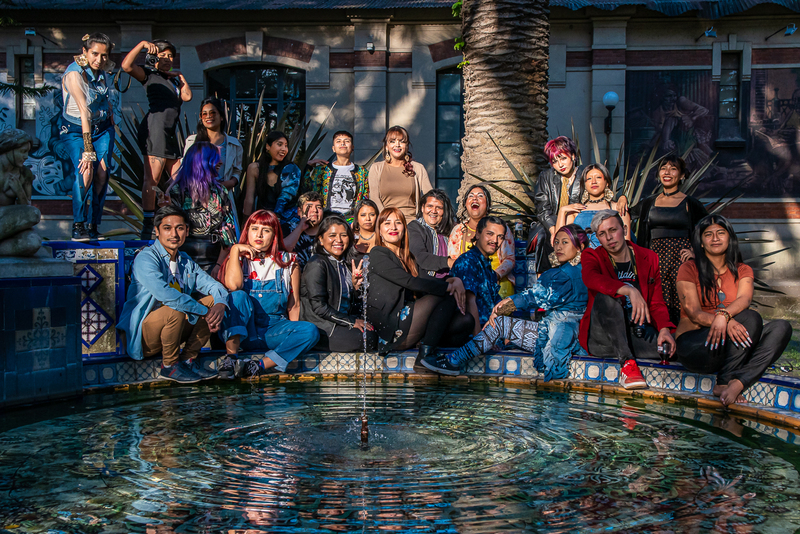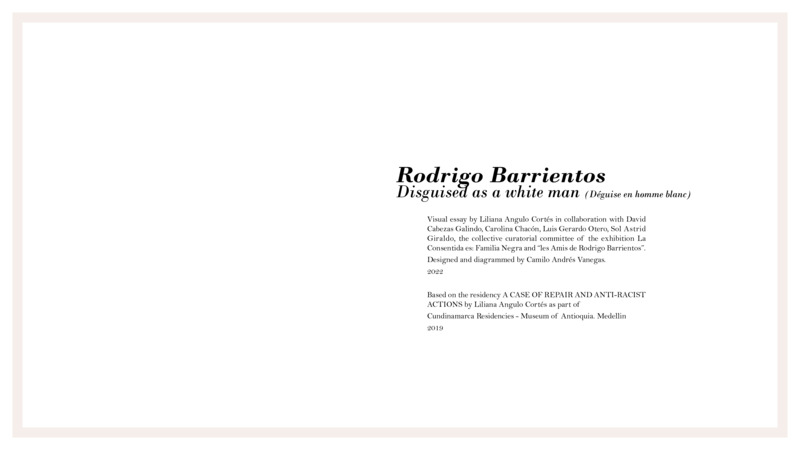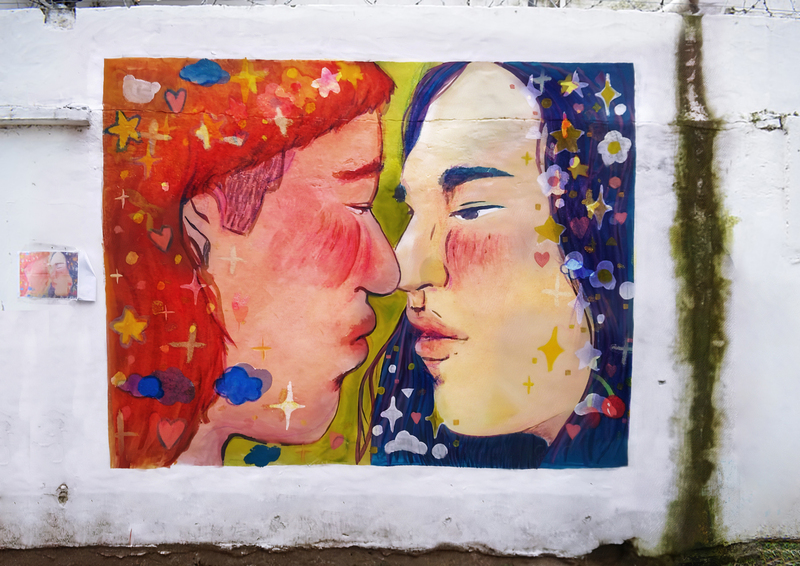Itens
-
 Muchacha de las aguas (English) Text of poem in English
Muchacha de las aguas (English) Text of poem in English -
 Rodrigo Barrientos: Disfrazado de hombre blanco A visual essay about the work of Afro-Colombian artist Rodrigo Barrientos, based on a collective curatorship, led by Liliana Angulo Cortés.
Rodrigo Barrientos: Disfrazado de hombre blanco A visual essay about the work of Afro-Colombian artist Rodrigo Barrientos, based on a collective curatorship, led by Liliana Angulo Cortés. -
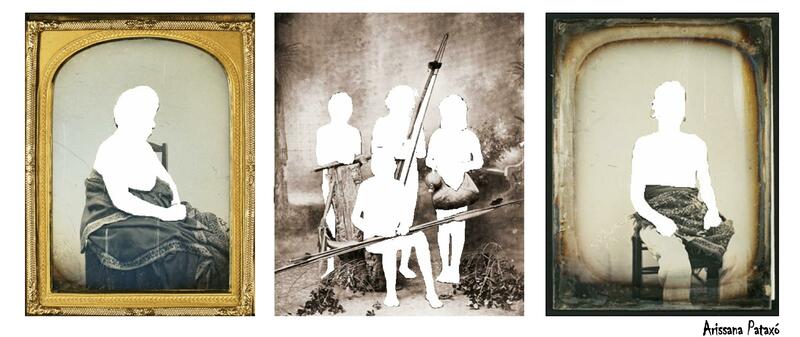 Indigente, indi(o)gente, indigen(a)-te A triptych composed of photographs of indigenous people in which Arissana Pataxó makes a digital-surgical intervention, erasing the bodies and faces, leaving only their outlines.
Indigente, indi(o)gente, indigen(a)-te A triptych composed of photographs of indigenous people in which Arissana Pataxó makes a digital-surgical intervention, erasing the bodies and faces, leaving only their outlines. -
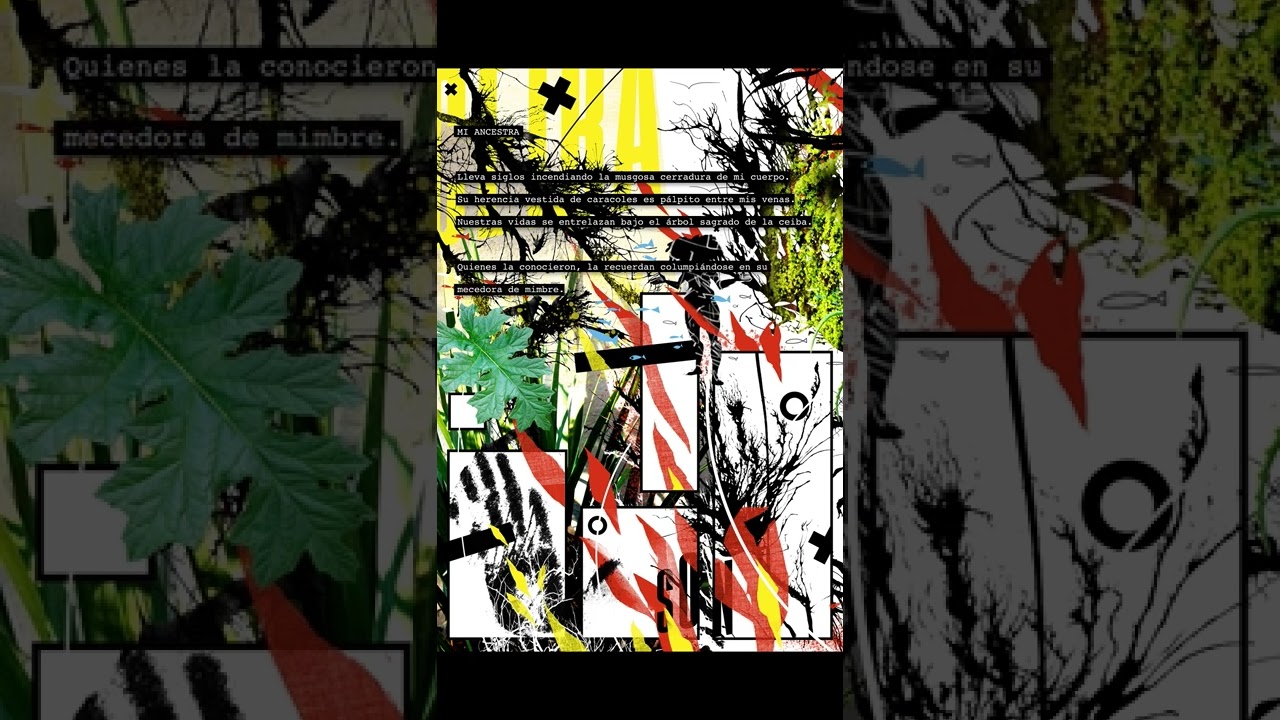 Mi Ancestra - animación This video features Ashanti Dinah reading her poem, "Mi Ancestra", on an animation produced by Wilson Borja
Mi Ancestra - animación This video features Ashanti Dinah reading her poem, "Mi Ancestra", on an animation produced by Wilson Borja -
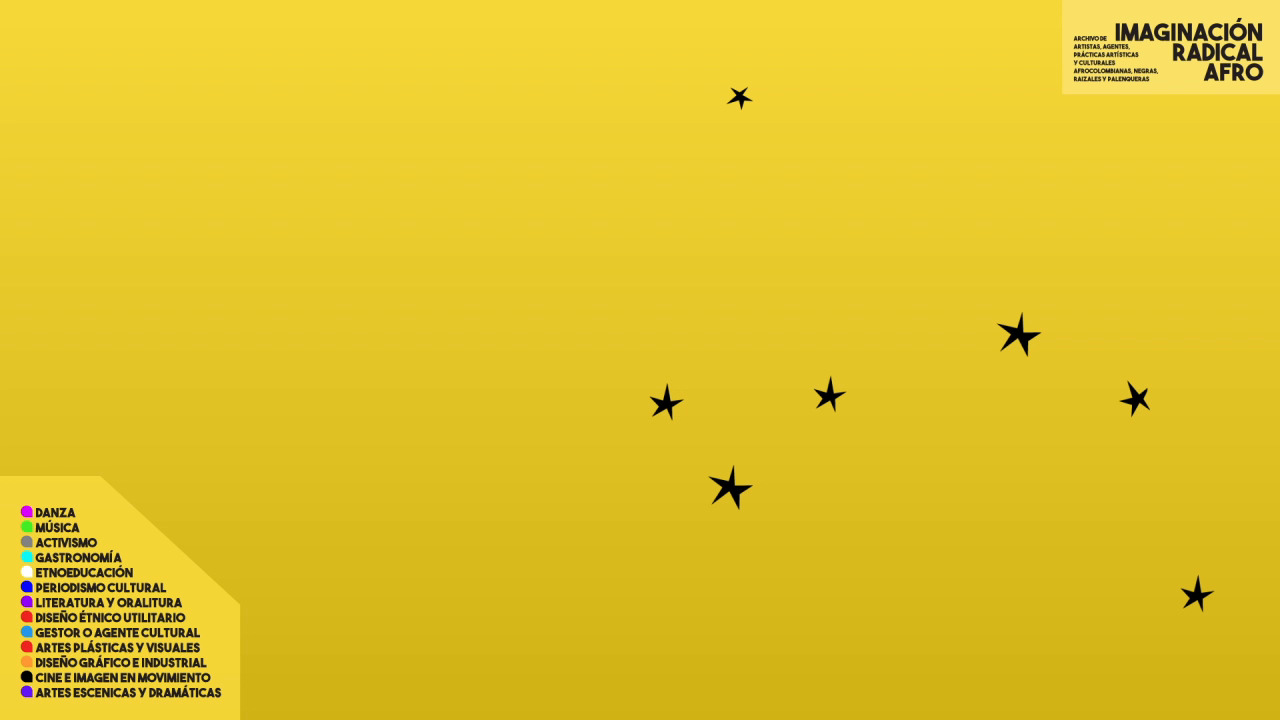 Chronology and infographic of Afro-descendant artists and cultural agents in Bogotá. Animation As part of the project Imaginación Radical Afro, this animated infographic displays a chronology of the numerous Afro-Colombian artists and cultural creators who have existed since 1773.
Chronology and infographic of Afro-descendant artists and cultural agents in Bogotá. Animation As part of the project Imaginación Radical Afro, this animated infographic displays a chronology of the numerous Afro-Colombian artists and cultural creators who have existed since 1773. -
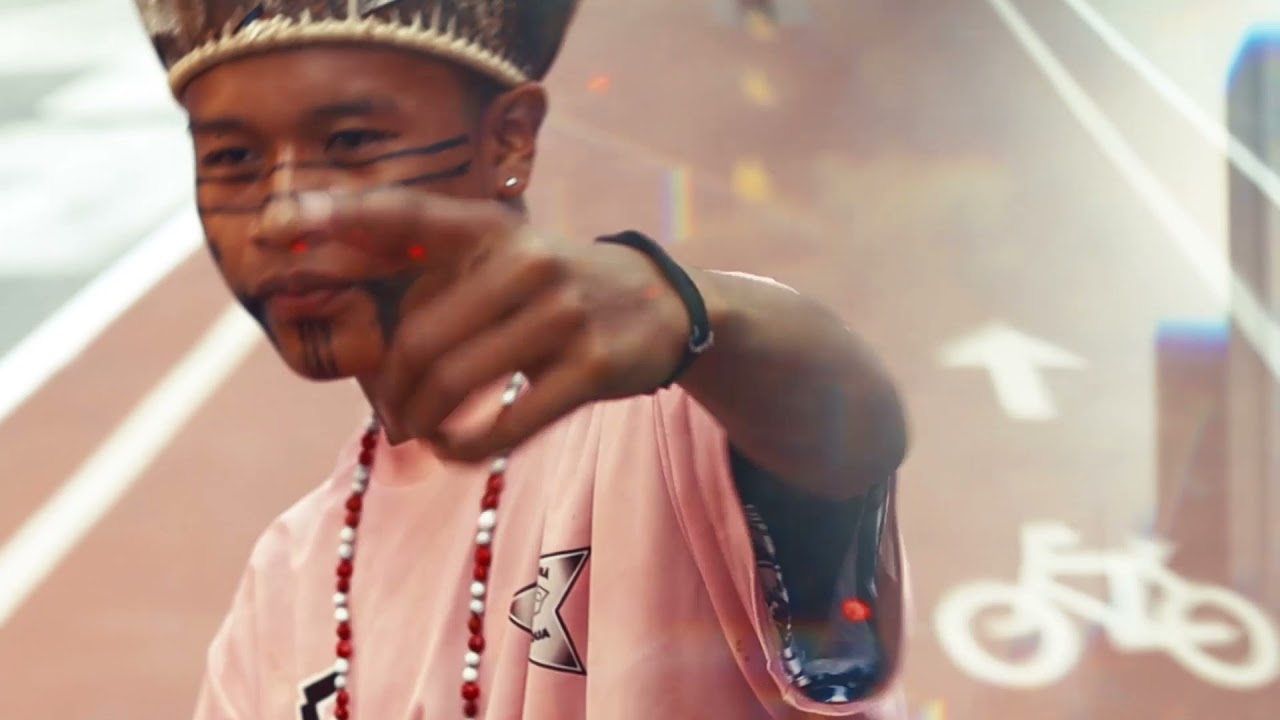 Resistir pra Existir Este vídeo foi feito especialmente para o projeto CARLA por Owerá, rapper indígena Guaraní-mbyá, e Juninho Karai, seu cunhado, sob a direção de Dia Freixo.
Resistir pra Existir Este vídeo foi feito especialmente para o projeto CARLA por Owerá, rapper indígena Guaraní-mbyá, e Juninho Karai, seu cunhado, sob a direção de Dia Freixo. -
 [Sem título] Photography
[Sem título] Photography -
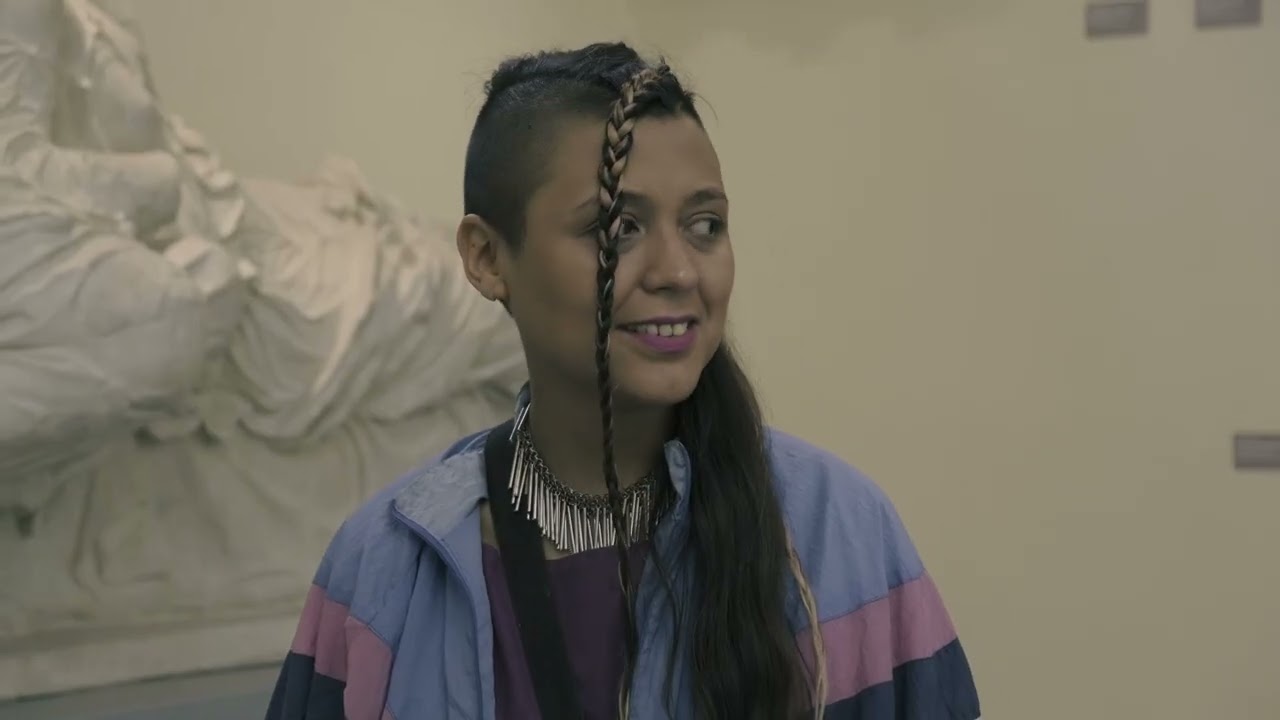 Traspasar las Puertas de Cristal del Museo Video made in Museo de Escultura Comparada la Cárcova, Buenos Aires
Traspasar las Puertas de Cristal del Museo Video made in Museo de Escultura Comparada la Cárcova, Buenos Aires -
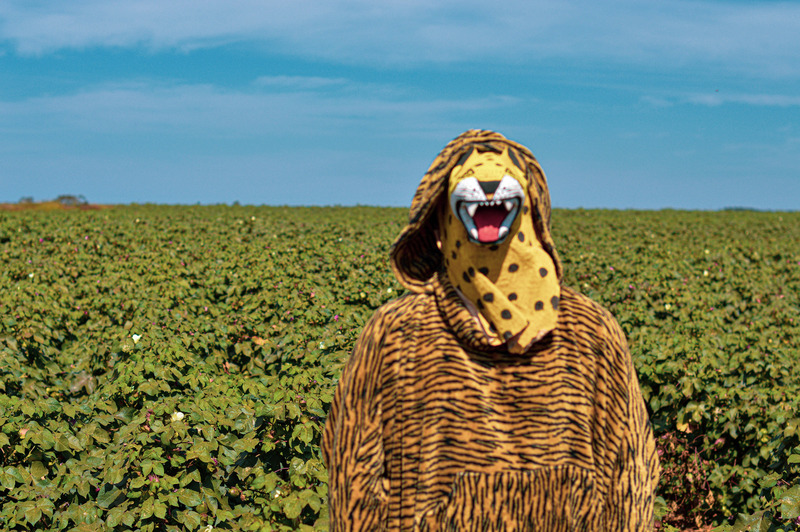 Colheita Maldita Still images to accompany Colheita Maldita video
Colheita Maldita Still images to accompany Colheita Maldita video -
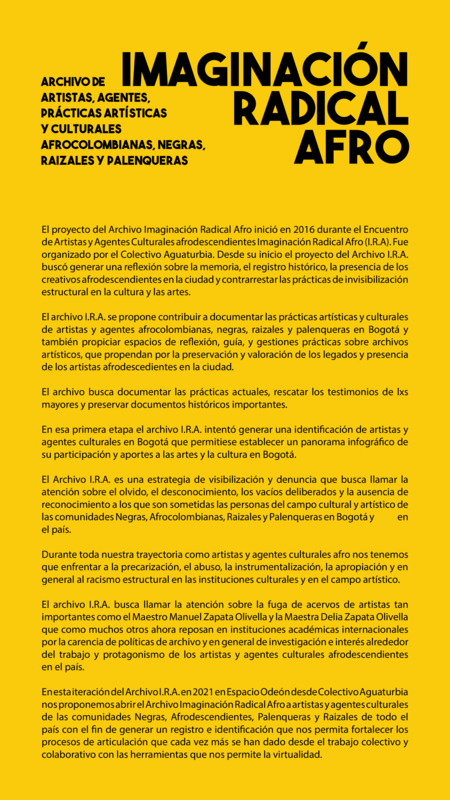 Archivo de Artistas, Agentes, Prácticas Artísticas y Culturales Afrocolombianas, Negras, Raizales y Palenqueras A PDF explaining the project, initiated by the project Imaginación Radical Afro, to create an archive of Afro-Colombian artists and cultural creators.
Archivo de Artistas, Agentes, Prácticas Artísticas y Culturales Afrocolombianas, Negras, Raizales y Palenqueras A PDF explaining the project, initiated by the project Imaginación Radical Afro, to create an archive of Afro-Colombian artists and cultural creators. -
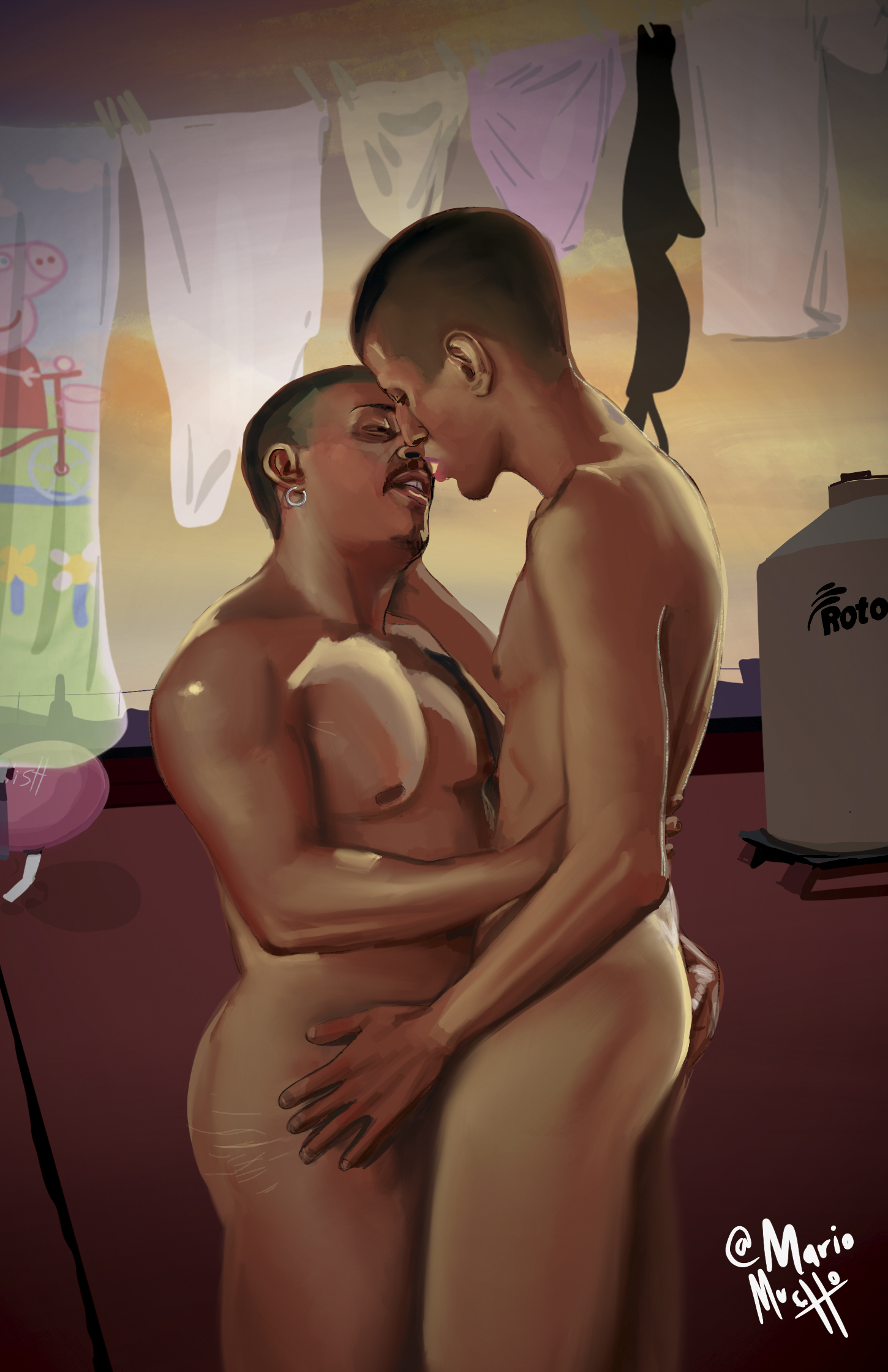 Tendido Photography
Tendido Photography -
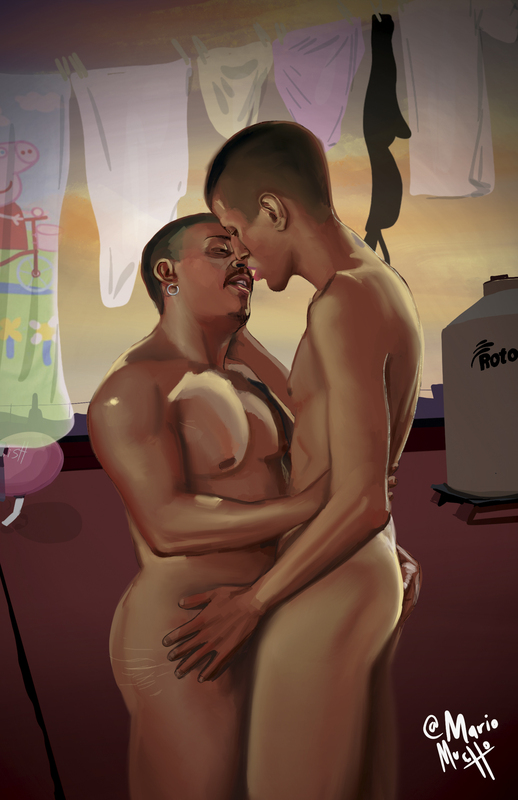 Tendido Digital drawing and animation
Tendido Digital drawing and animation -
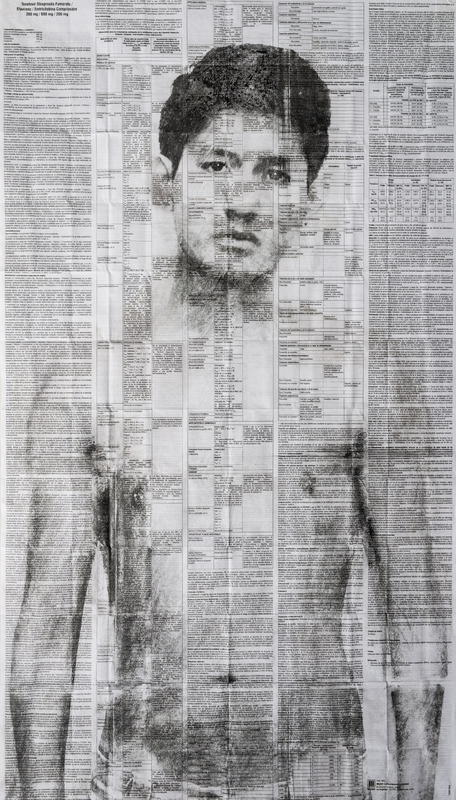 MJOCR22051995 Self-portrait and laser printing, direct contact transfer on Antiretroviral HIV leaflet, 88 x 50 cm
MJOCR22051995 Self-portrait and laser printing, direct contact transfer on Antiretroviral HIV leaflet, 88 x 50 cm -
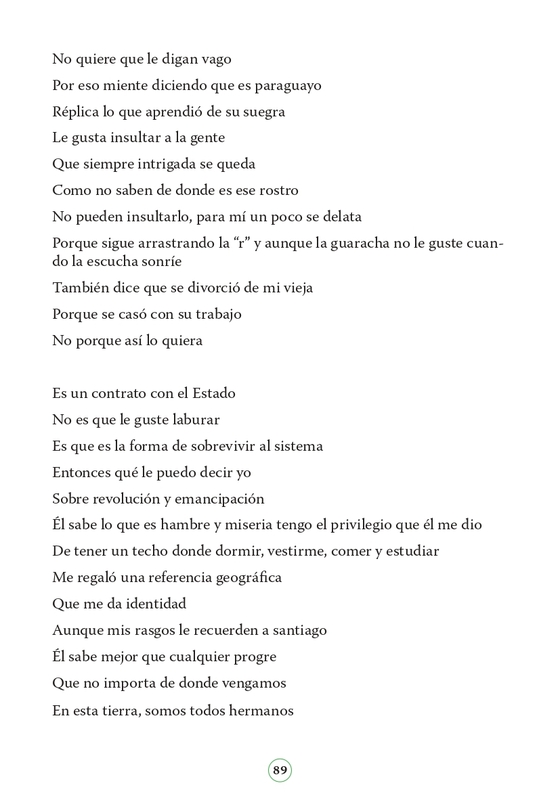 Marrones Escriben – Selection 9 A Marrón poem. From many places and none “He says that he would have liked to study But with hunger and heat, you can't think He longs for his little adobe house and the cot where he grew up” (Page 88).
Marrones Escriben – Selection 9 A Marrón poem. From many places and none “He says that he would have liked to study But with hunger and heat, you can't think He longs for his little adobe house and the cot where he grew up” (Page 88). -
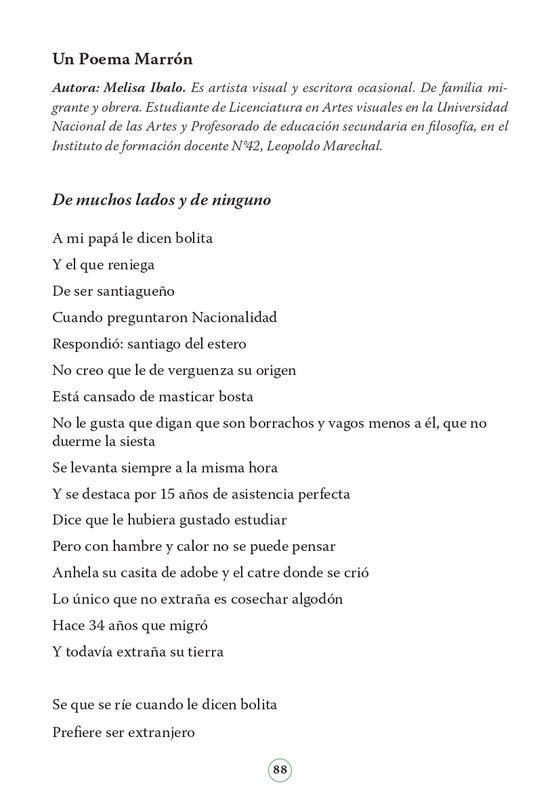 Marrones Escriben – Selection 8 A Marrón poem. From many places and none “He says that he would have liked to study But with hunger and heat, you can't think He longs for his little adobe house and the cot where he grew up” (Page 88
Marrones Escriben – Selection 8 A Marrón poem. From many places and none “He says that he would have liked to study But with hunger and heat, you can't think He longs for his little adobe house and the cot where he grew up” (Page 88 -
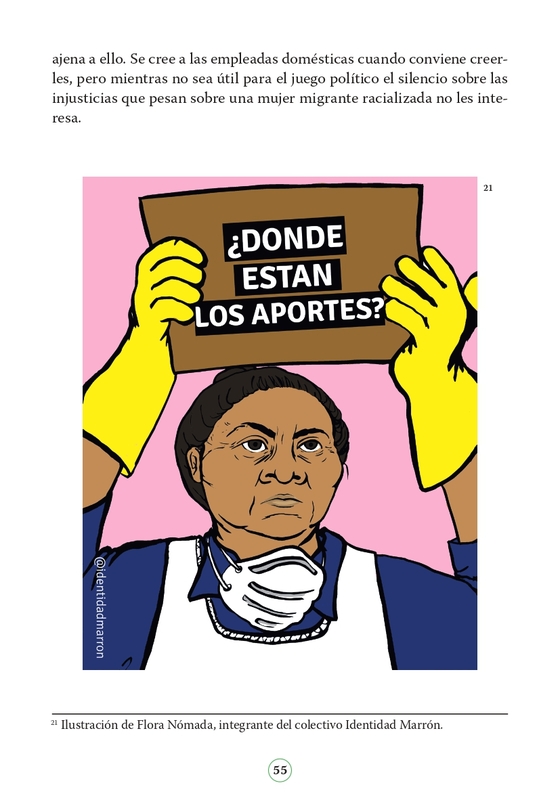 Marrones Escriben – Selection 7 “ We ask ourselves: where are the social security contributions? Where are the unpaid contributions that racialised people should have received? Domestic work is a feminised job. According to the state, 76.8% of domestic cleaners in Argentina are employed in precarious condition.” (Page 54)
Marrones Escriben – Selection 7 “ We ask ourselves: where are the social security contributions? Where are the unpaid contributions that racialised people should have received? Domestic work is a feminised job. According to the state, 76.8% of domestic cleaners in Argentina are employed in precarious condition.” (Page 54) -
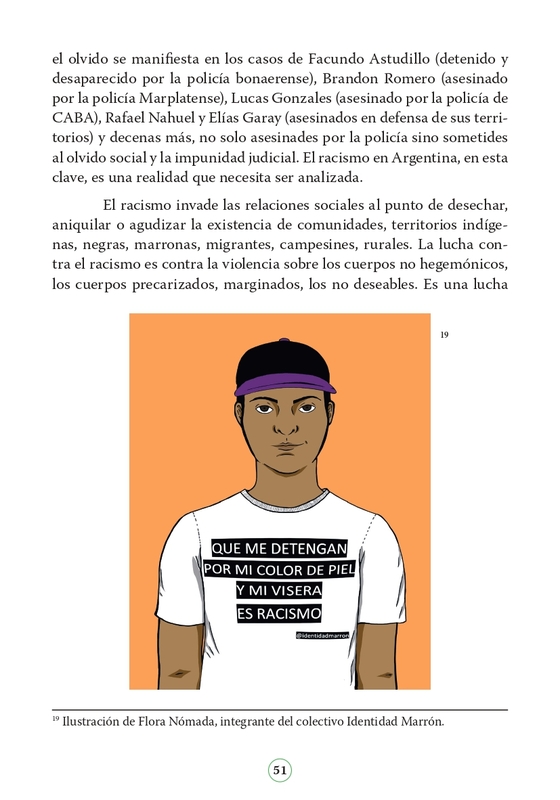 Marrones Escriben – Selection 6 “To denounce trigger-happy occurrences in Argentina as racist crimes is the first step towards addressing that police and institutional violence is exercised against non-white bodies.” (page 52)
Marrones Escriben – Selection 6 “To denounce trigger-happy occurrences in Argentina as racist crimes is the first step towards addressing that police and institutional violence is exercised against non-white bodies.” (page 52) -
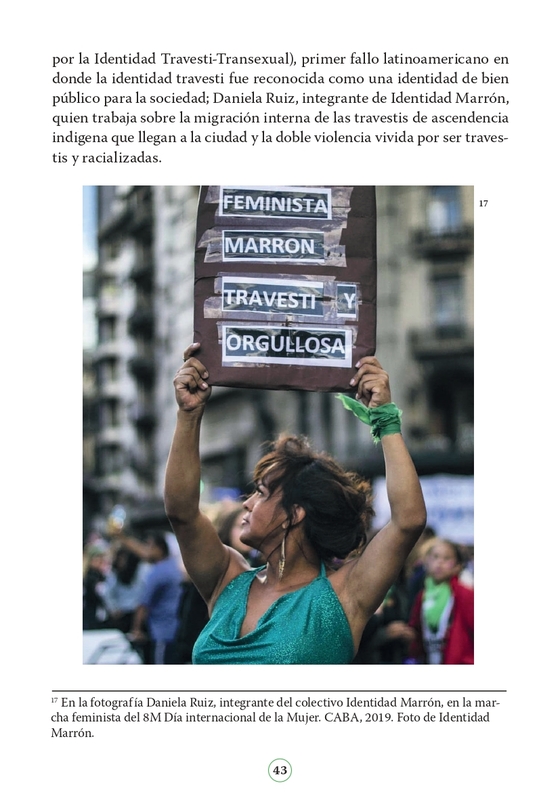 Marrones Escriben – Selection 5 “Lohana, Diana and Daniela have something in common: they are racialised transvestites who have opened up the discussion about the racialisation of the transvestite-trans identity – an often invisibilised fact that we must make it visible so rights can be demanded” (page 44)
Marrones Escriben – Selection 5 “Lohana, Diana and Daniela have something in common: they are racialised transvestites who have opened up the discussion about the racialisation of the transvestite-trans identity – an often invisibilised fact that we must make it visible so rights can be demanded” (page 44) -
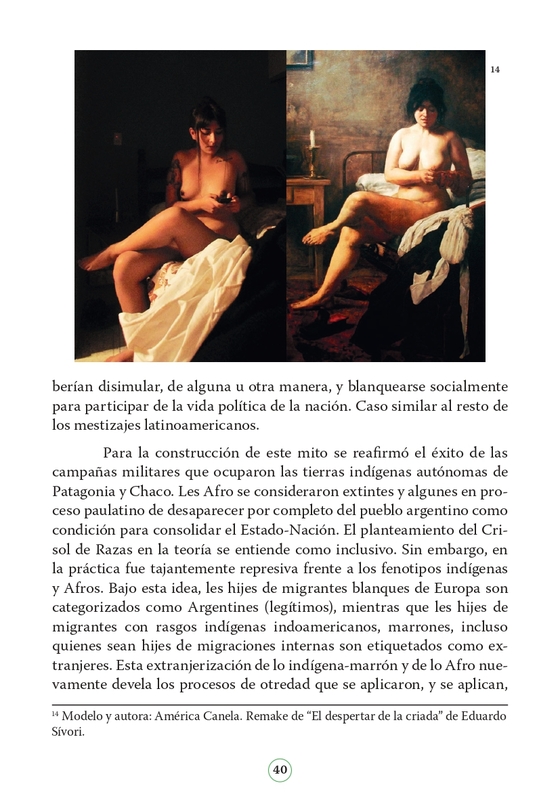 Marrones Escriben – Selection 4 “In Argentine cinema, for example, there is colourism in the way in which roles are assigned to the actors. Often actors who have a Marrón or indigenous phenotype are cast to play secondary roles” (Page 36)
Marrones Escriben – Selection 4 “In Argentine cinema, for example, there is colourism in the way in which roles are assigned to the actors. Often actors who have a Marrón or indigenous phenotype are cast to play secondary roles” (Page 36) -
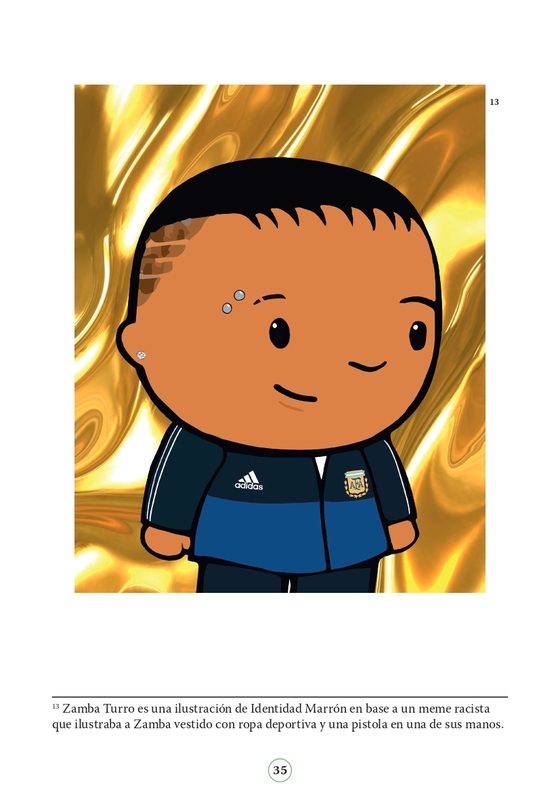 Marrones Escriben – Selection 3 "Whitening operates in the collective unconscious that demands more and more from the masses to be able to be on equal terms with an advertising capitalist market that constantly demands social whitening." (page 34)
Marrones Escriben – Selection 3 "Whitening operates in the collective unconscious that demands more and more from the masses to be able to be on equal terms with an advertising capitalist market that constantly demands social whitening." (page 34) -
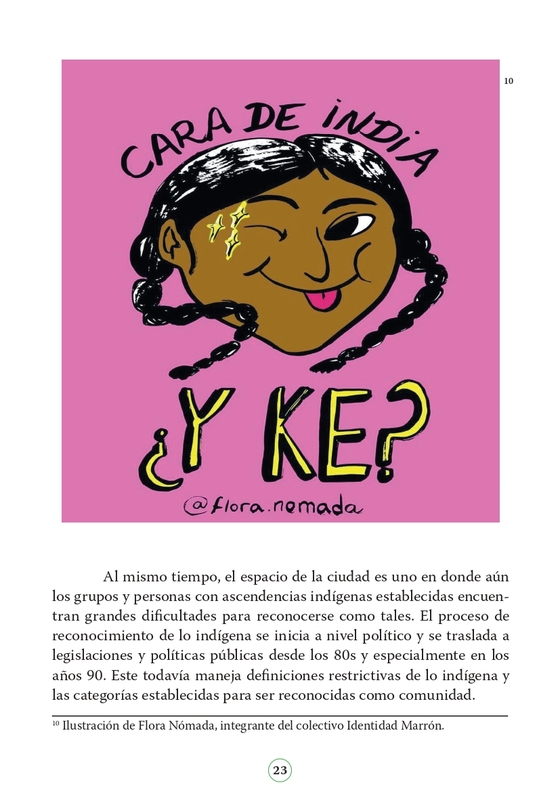 Marrones Escriben – Selection 2 “ Colourism becomes effective when, for example, social mobility and class are associated with European skin tones and phenotypes" (page 29)
Marrones Escriben – Selection 2 “ Colourism becomes effective when, for example, social mobility and class are associated with European skin tones and phenotypes" (page 29) -
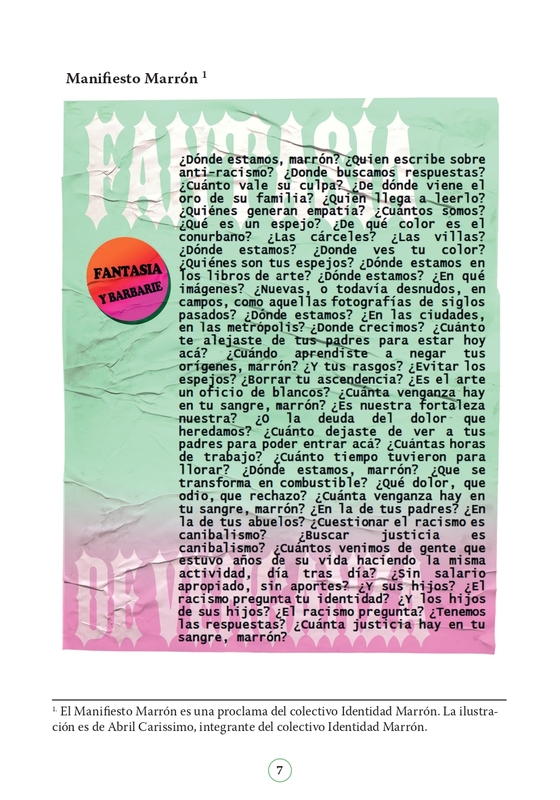 Marrones Escriben – Selection 1 ‘Where are we, the Marrones? Who writes about anti-racism? Where do we look for answers? How much is their guilt worth? Where does your family's gold come from? Who gets to read it? Who generates empathy? How many are ‘we? What is a mirror? What colour is the Buenos Aires conurbation? And the prisons? And the shantytowns? Where are we? Where do you see your colour?” (Page 7)
Marrones Escriben – Selection 1 ‘Where are we, the Marrones? Who writes about anti-racism? Where do we look for answers? How much is their guilt worth? Where does your family's gold come from? Who gets to read it? Who generates empathy? How many are ‘we? What is a mirror? What colour is the Buenos Aires conurbation? And the prisons? And the shantytowns? Where are we? Where do you see your colour?” (Page 7) -
 Chronology and infographic of Afro-descendant artists and cultural agents in Bogotá. Animation As part of the project Imaginación Radical Afro, this animated infographic displays a chronology of the numerous Afro-Colombian artists and cultural creators who have existed since 1773.
Chronology and infographic of Afro-descendant artists and cultural agents in Bogotá. Animation As part of the project Imaginación Radical Afro, this animated infographic displays a chronology of the numerous Afro-Colombian artists and cultural creators who have existed since 1773. -
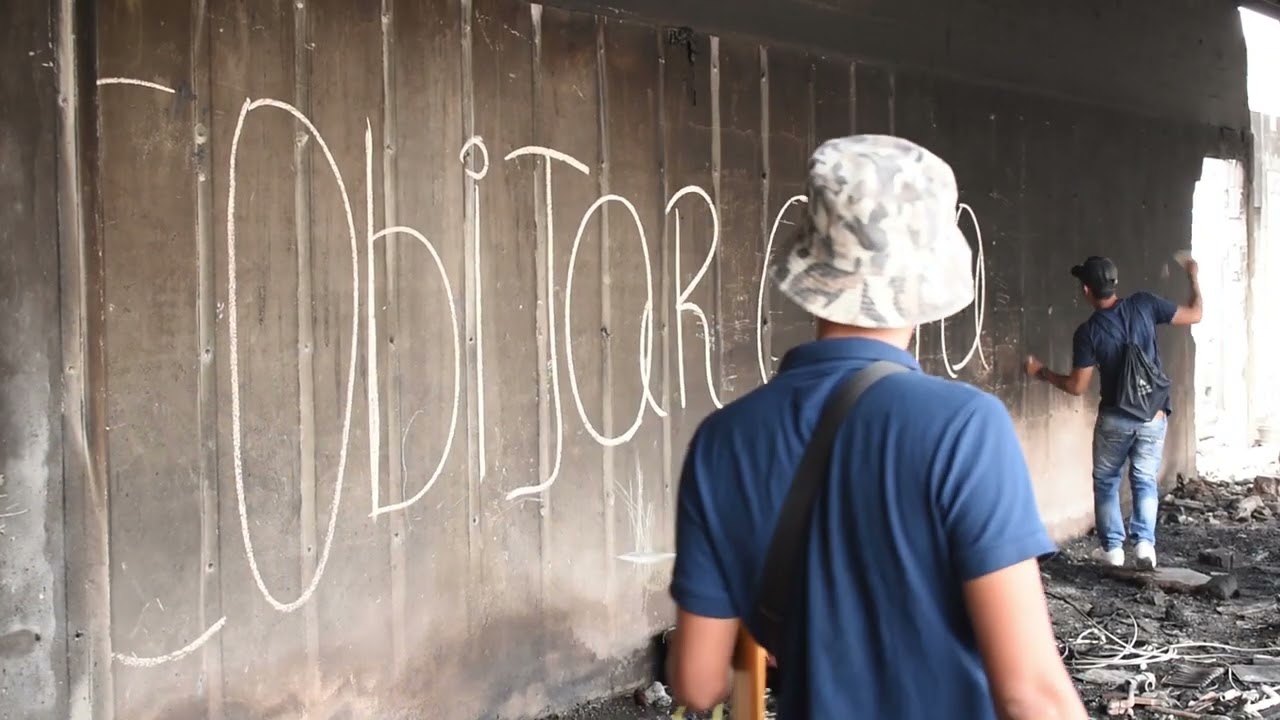 Salve, Salva, Salvia This video shows a performnace carried out with men and women from the neighbourhood of Siloé in the city of Cali. It documents an intervention in the ruins of the Dollar City shopping centre.
Salve, Salva, Salvia This video shows a performnace carried out with men and women from the neighbourhood of Siloé in the city of Cali. It documents an intervention in the ruins of the Dollar City shopping centre. -
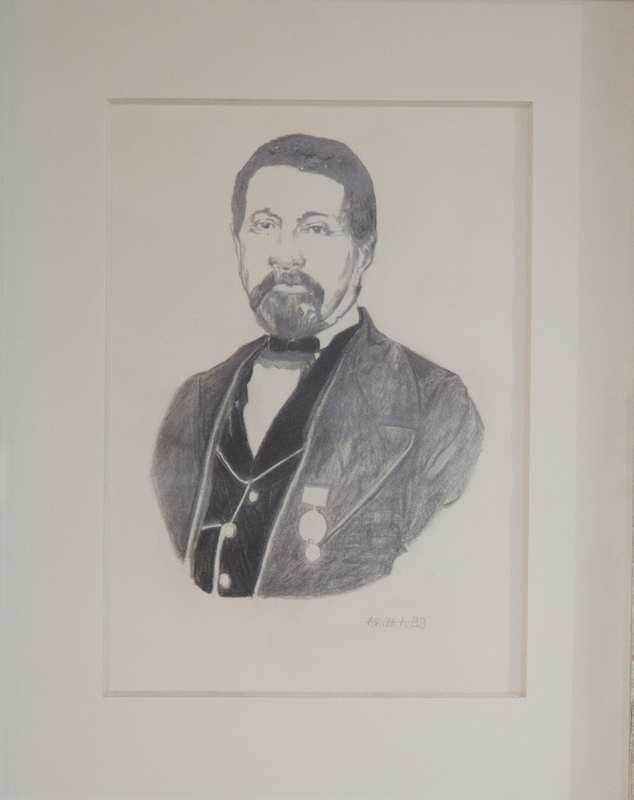 Indio de Turbaná 2 One of a series of six images from the exhibition Black Enough?, which was curated by Ariza.
Indio de Turbaná 2 One of a series of six images from the exhibition Black Enough?, which was curated by Ariza. -
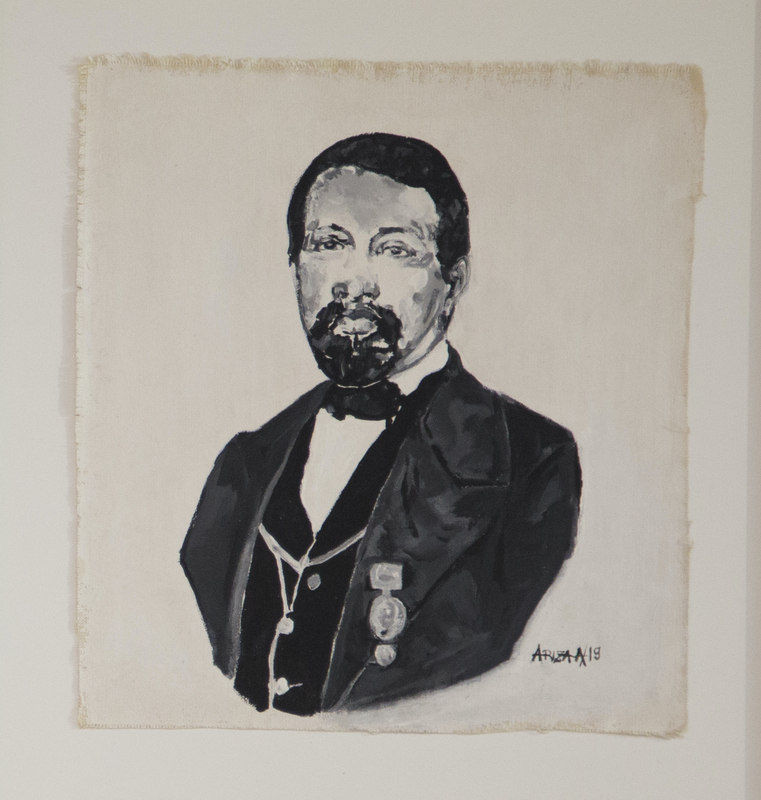 Indio de Turbaná 1 One of a series of six images from the exhibition Black Enough?, which was curated by Ariza.
Indio de Turbaná 1 One of a series of six images from the exhibition Black Enough?, which was curated by Ariza. -
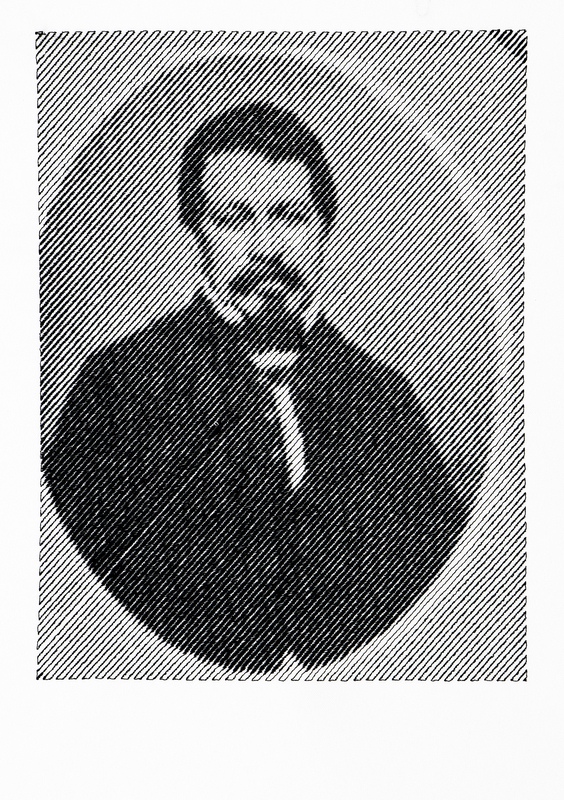 Tri-étnico One of a series of six images from the exhibition Black Enough?, which was curated by Ariza.
Tri-étnico One of a series of six images from the exhibition Black Enough?, which was curated by Ariza. -
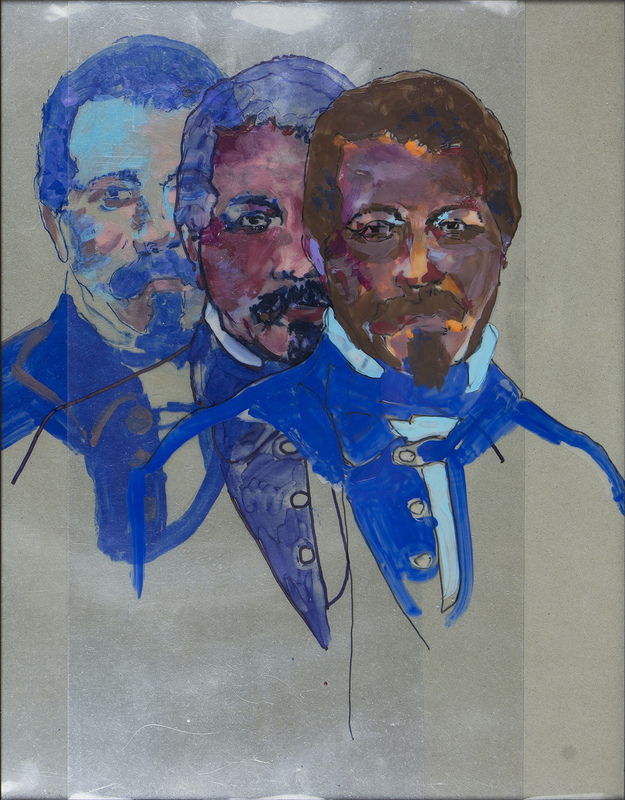 Cósmico One of a series of six images from the exhibition Black Enough?, which was curated by Ariza.
Cósmico One of a series of six images from the exhibition Black Enough?, which was curated by Ariza. -
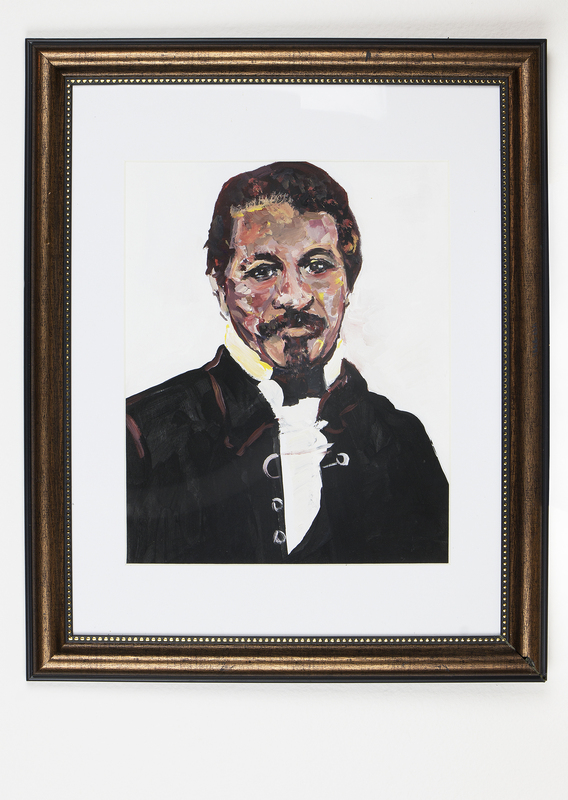 Retrato Familiar One of a series of six images from the exhibition Black Enough?, which was curated by Ariza.
Retrato Familiar One of a series of six images from the exhibition Black Enough?, which was curated by Ariza. -
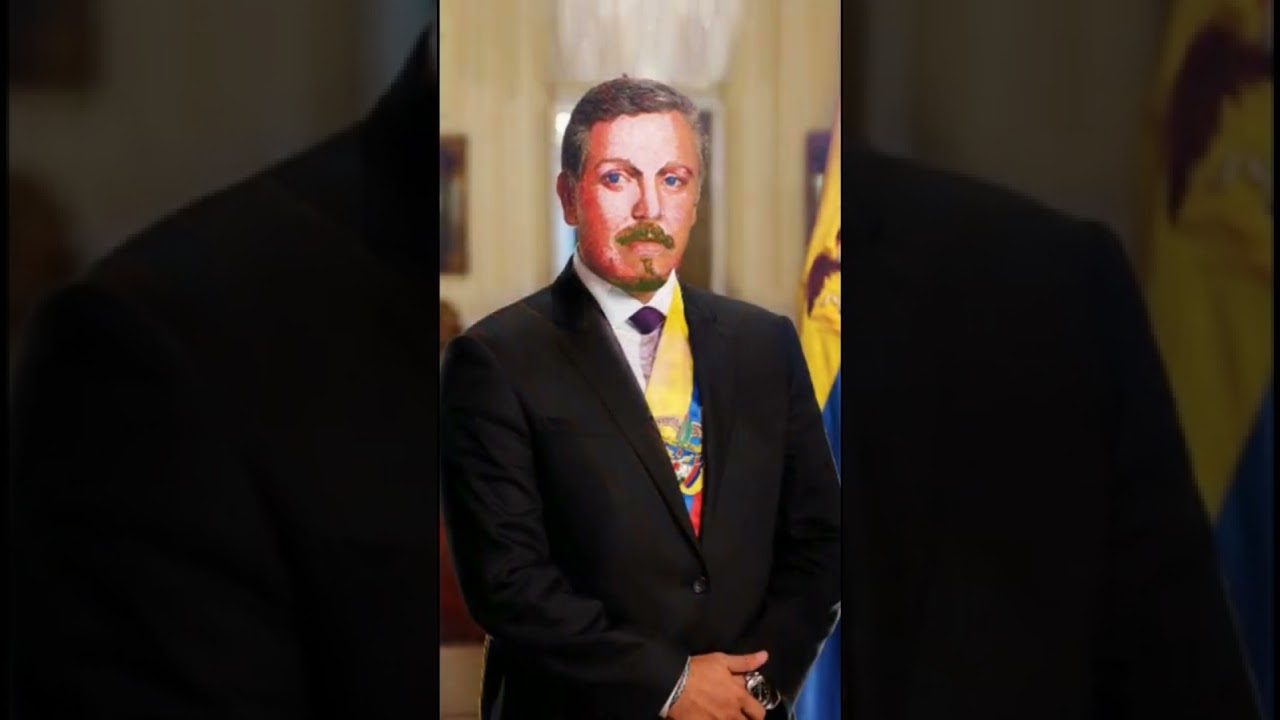 Un retoque cruel: presidente “negro” de Colombia Part of the item Black Enough?, which was an exhibition that Ariza curated in 2019. The video was featured in the exhibition.
Un retoque cruel: presidente “negro” de Colombia Part of the item Black Enough?, which was an exhibition that Ariza curated in 2019. The video was featured in the exhibition. -
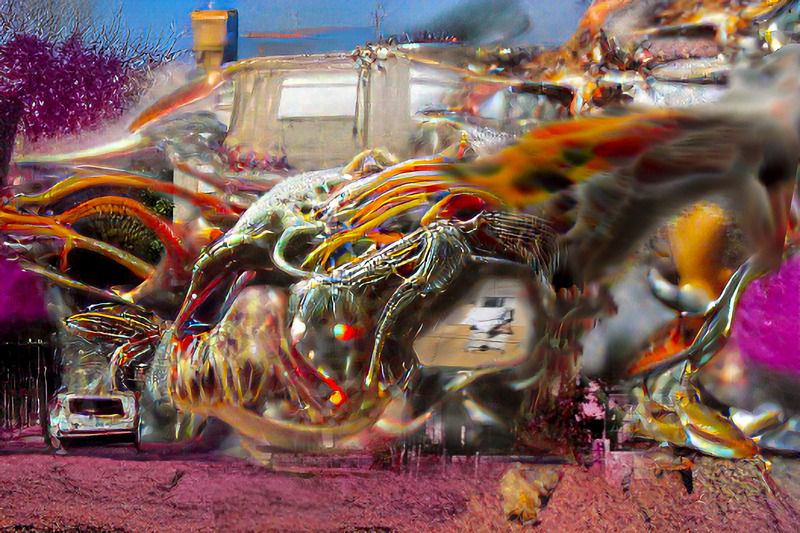 Engendro Digital collage
Engendro Digital collage -
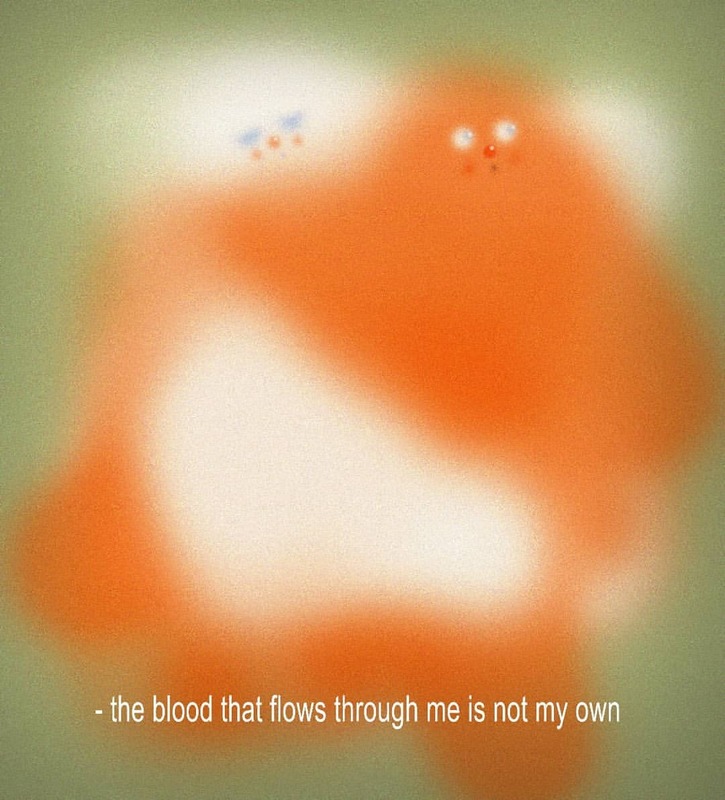 The blood Digital illustration
The blood Digital illustration -
 La útima hija de K'ojj - II 3-D animation
La útima hija de K'ojj - II 3-D animation -
 La útima hija de K'ojj - II 3-D animation
La útima hija de K'ojj - II 3-D animation -
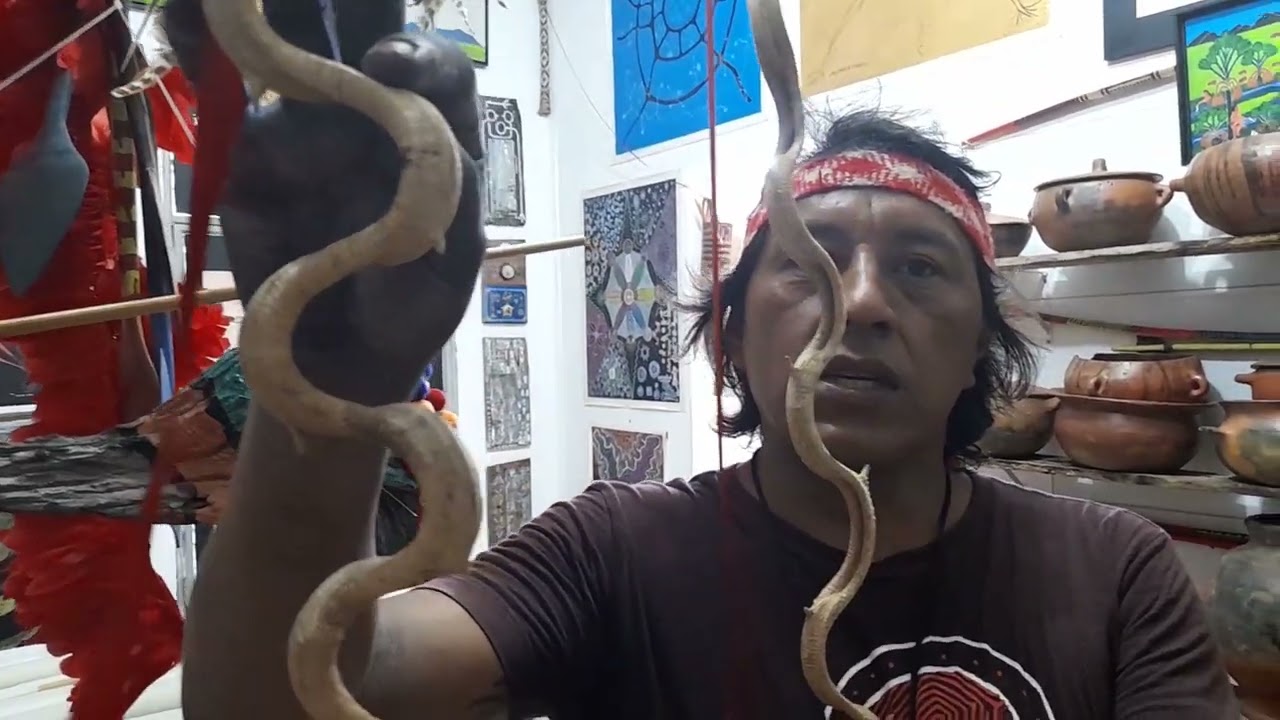 Mover a grande canoa In this video, the Brazilian Indigenous artist, Jaider Esbell, films himself talks about contemporary Indigenous art and his project of creating the Jaider Esbell Gallery.
Mover a grande canoa In this video, the Brazilian Indigenous artist, Jaider Esbell, films himself talks about contemporary Indigenous art and his project of creating the Jaider Esbell Gallery. -
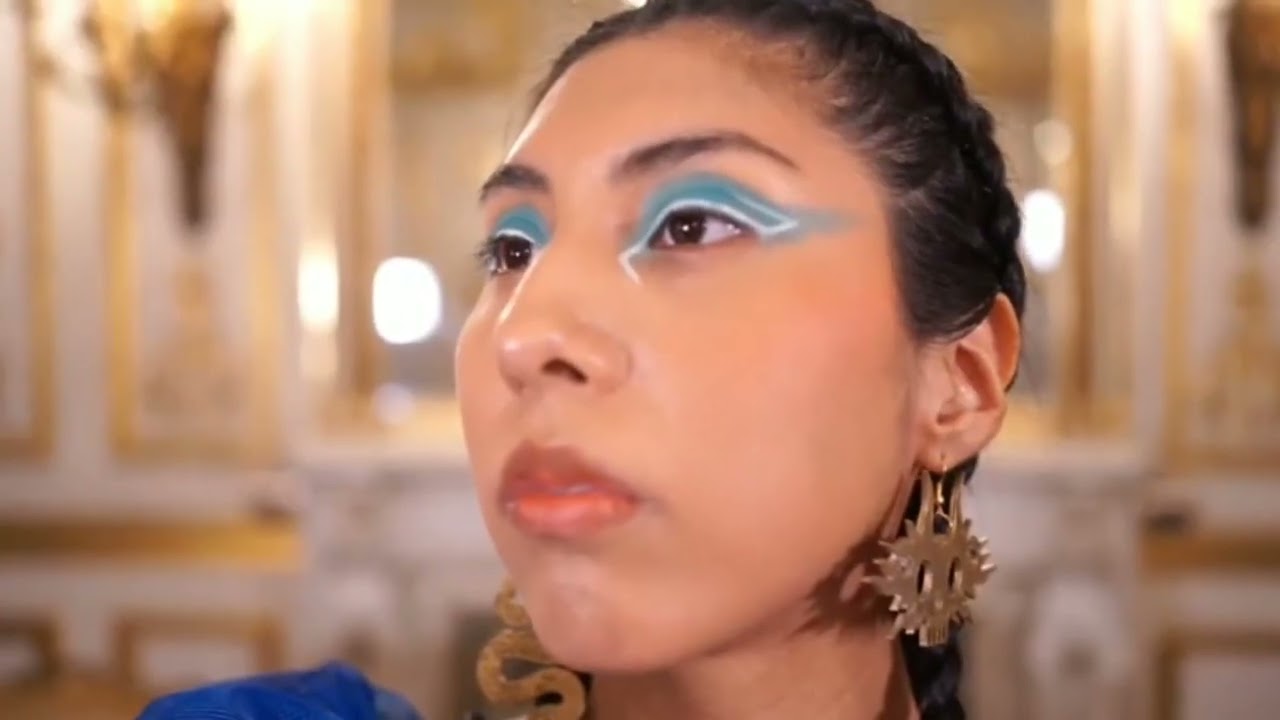 Raíces Textile design
Raíces Textile design -
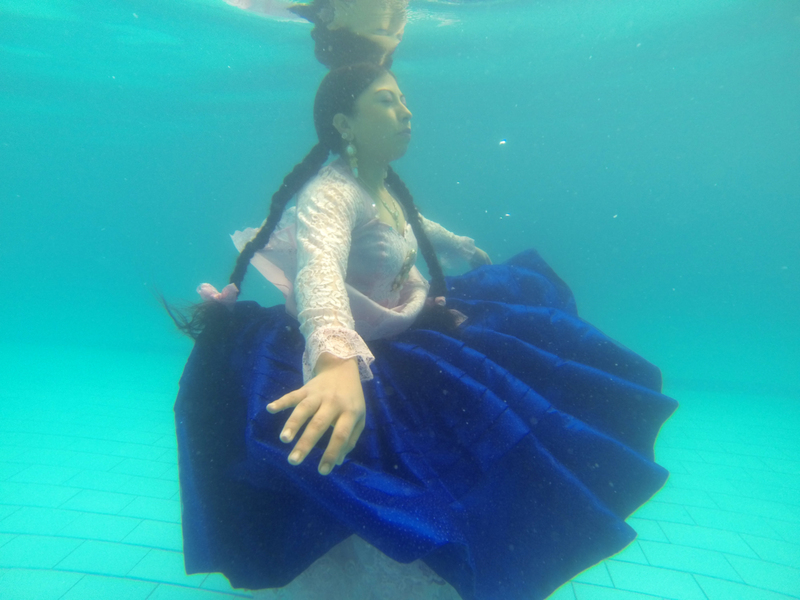 Sueña Photography
Sueña Photography -
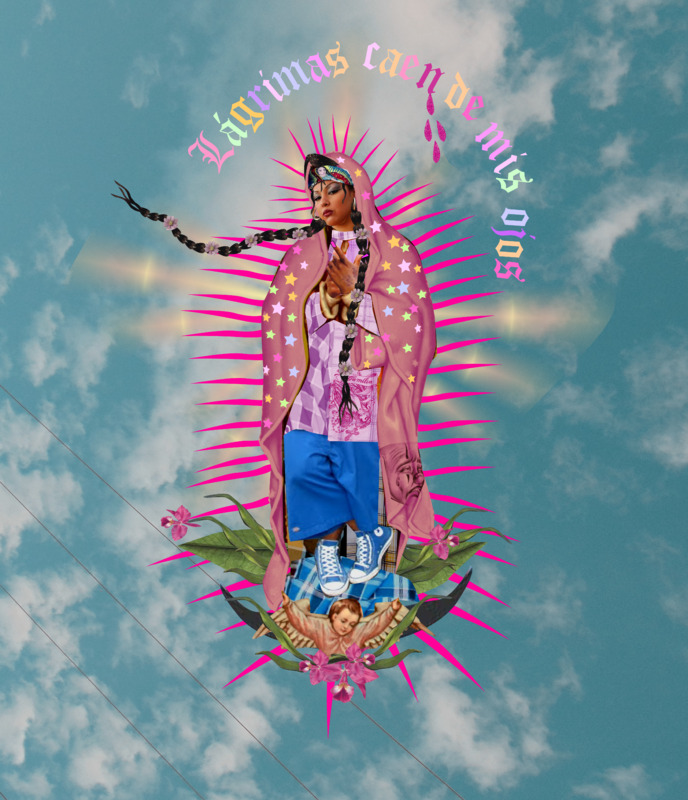 Lagrimas caen Digital collage
Lagrimas caen Digital collage -
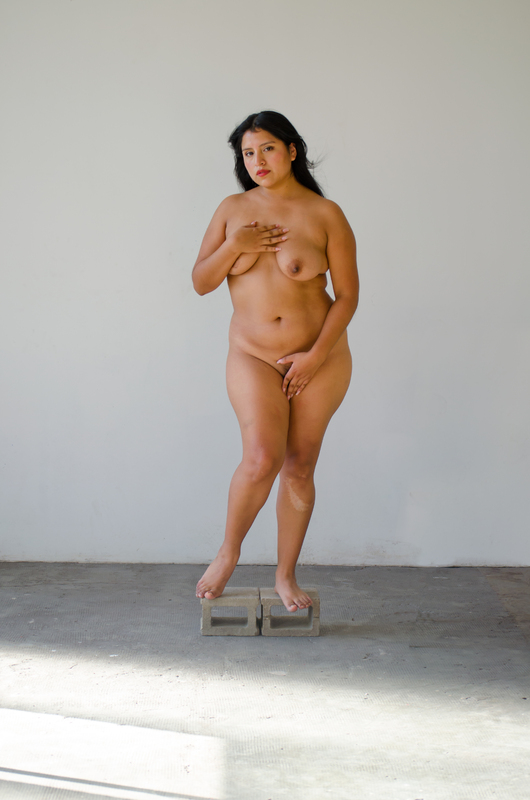 La Venus Marrona Digital photography
La Venus Marrona Digital photography -
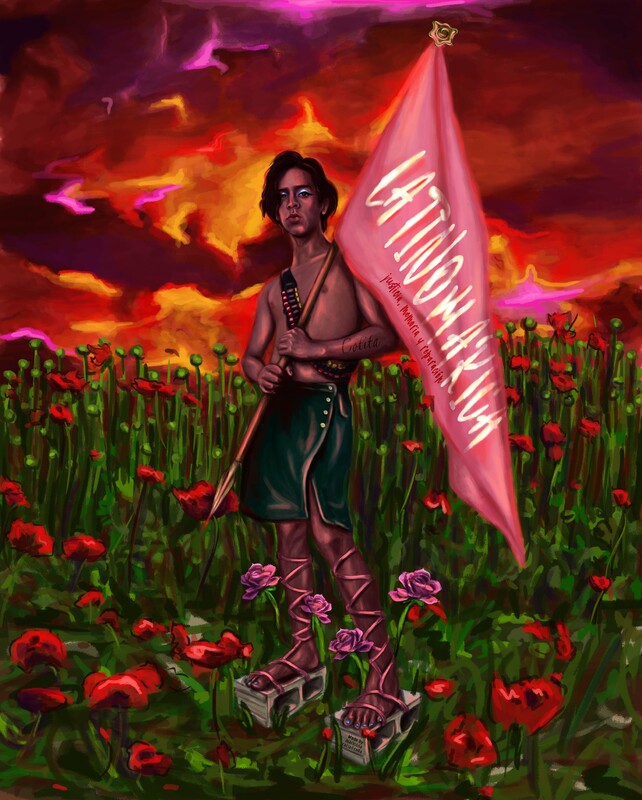 Latinomarica Digital paint
Latinomarica Digital paint -
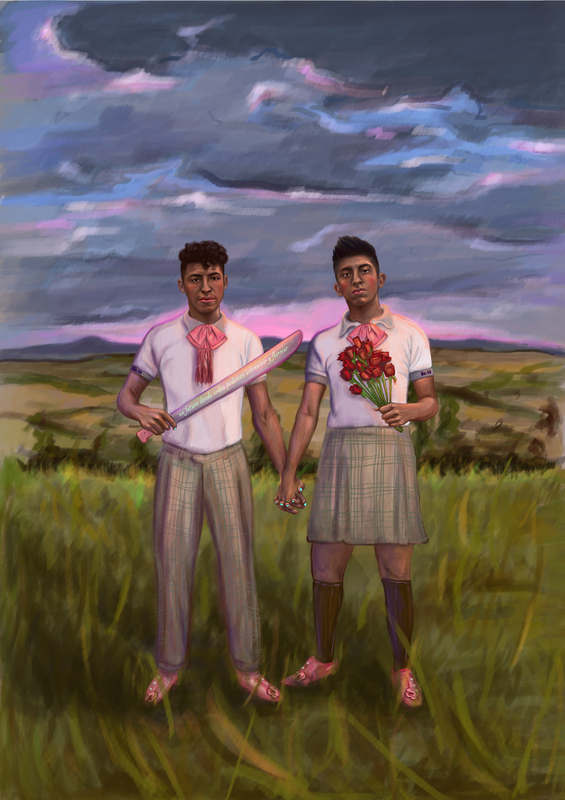 Uniforme Digital paint
Uniforme Digital paint -
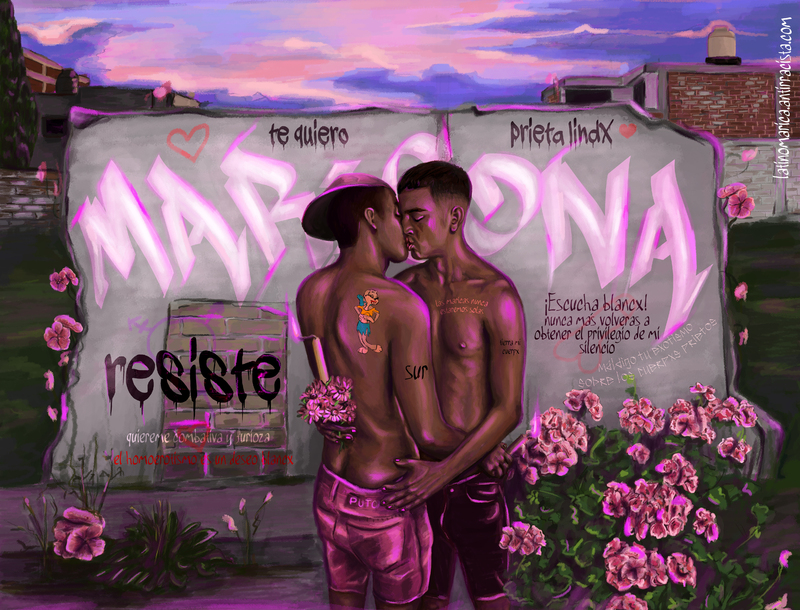 ¡Maricona resiste! Digital paint
¡Maricona resiste! Digital paint -
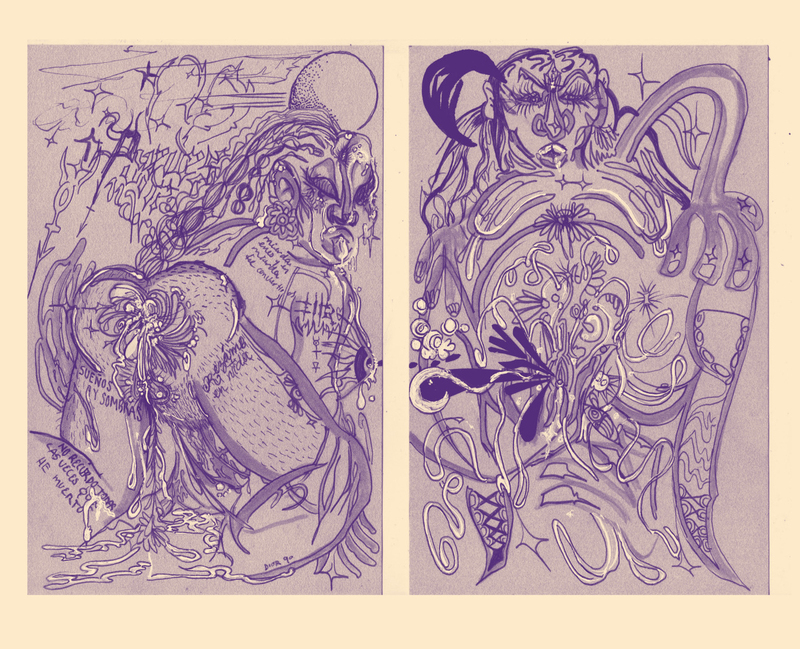 Luna (autoexistente) nueva flujo natural Illustration in ....
Luna (autoexistente) nueva flujo natural Illustration in .... -
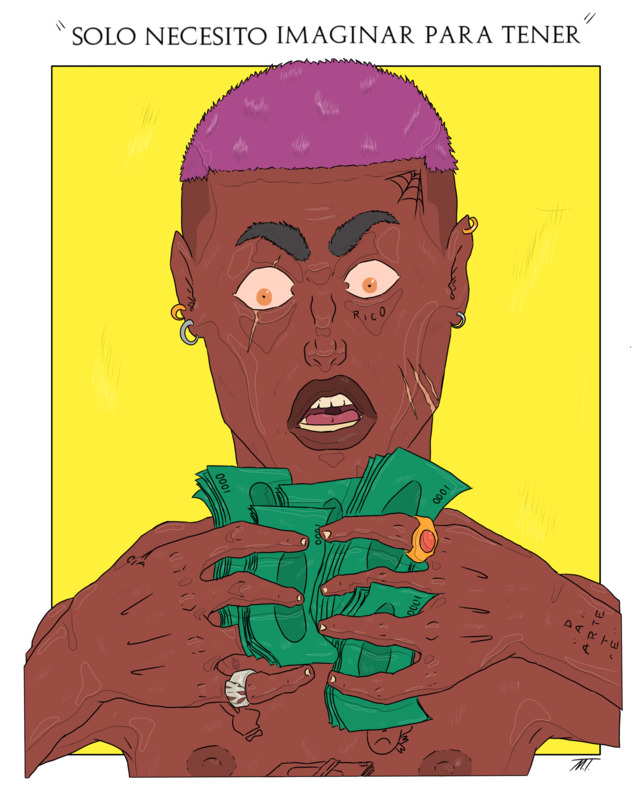 Solo necesito imaginar para tener Digital Drawing
Solo necesito imaginar para tener Digital Drawing -
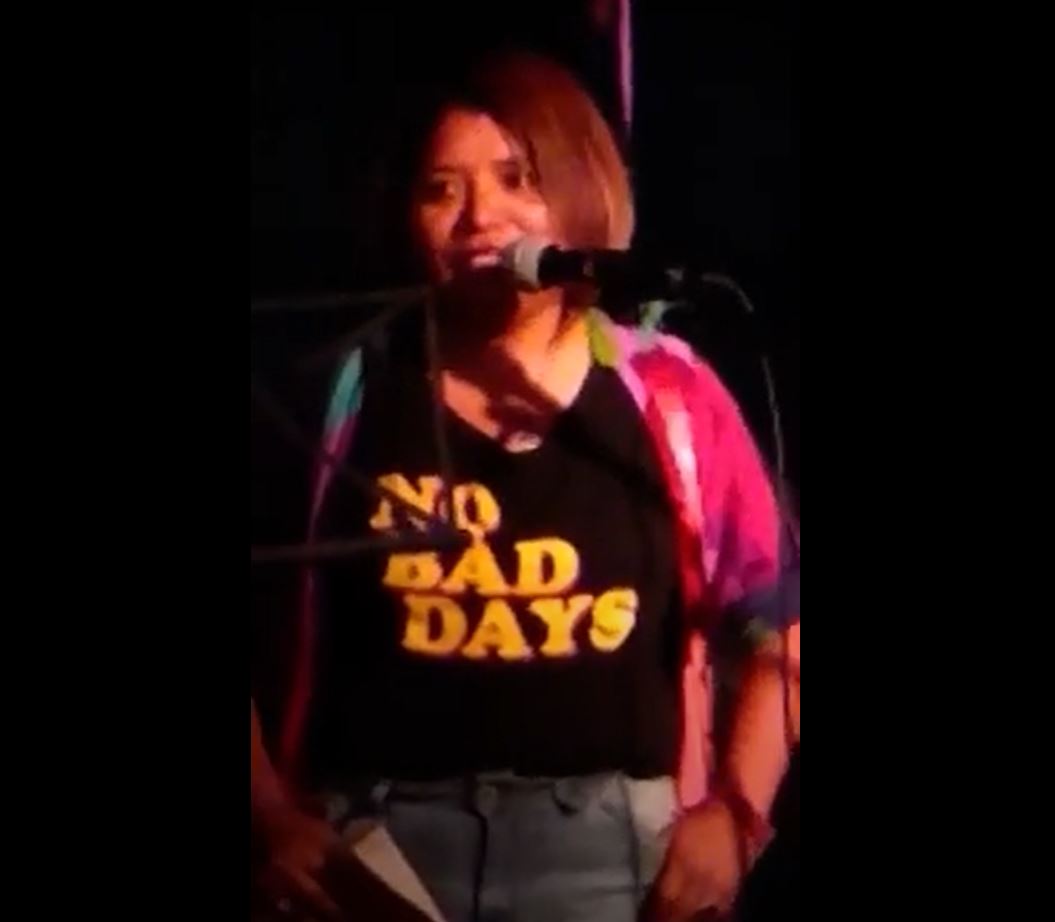 wht trsh Glitch video art based on cell phone videos and whatsapp audios
wht trsh Glitch video art based on cell phone videos and whatsapp audios -
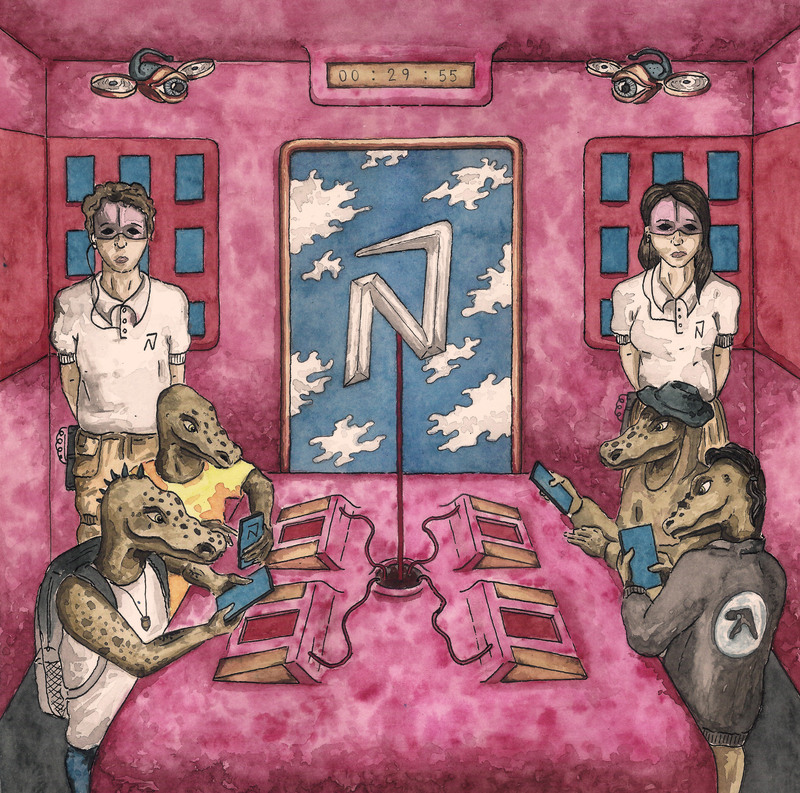 Observación Painting on paper
Observación Painting on paper -
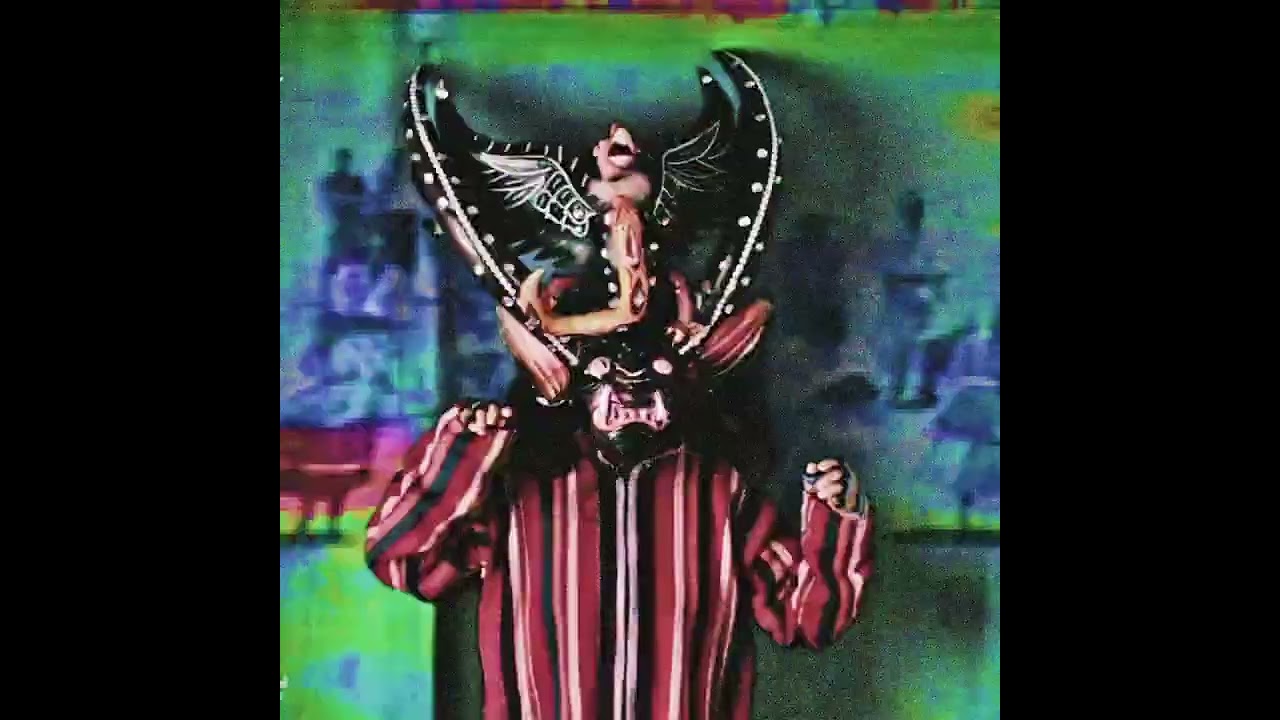 El Danzante Experimental video with edited images taken from the internet and a performative action by the artist
El Danzante Experimental video with edited images taken from the internet and a performative action by the artist

